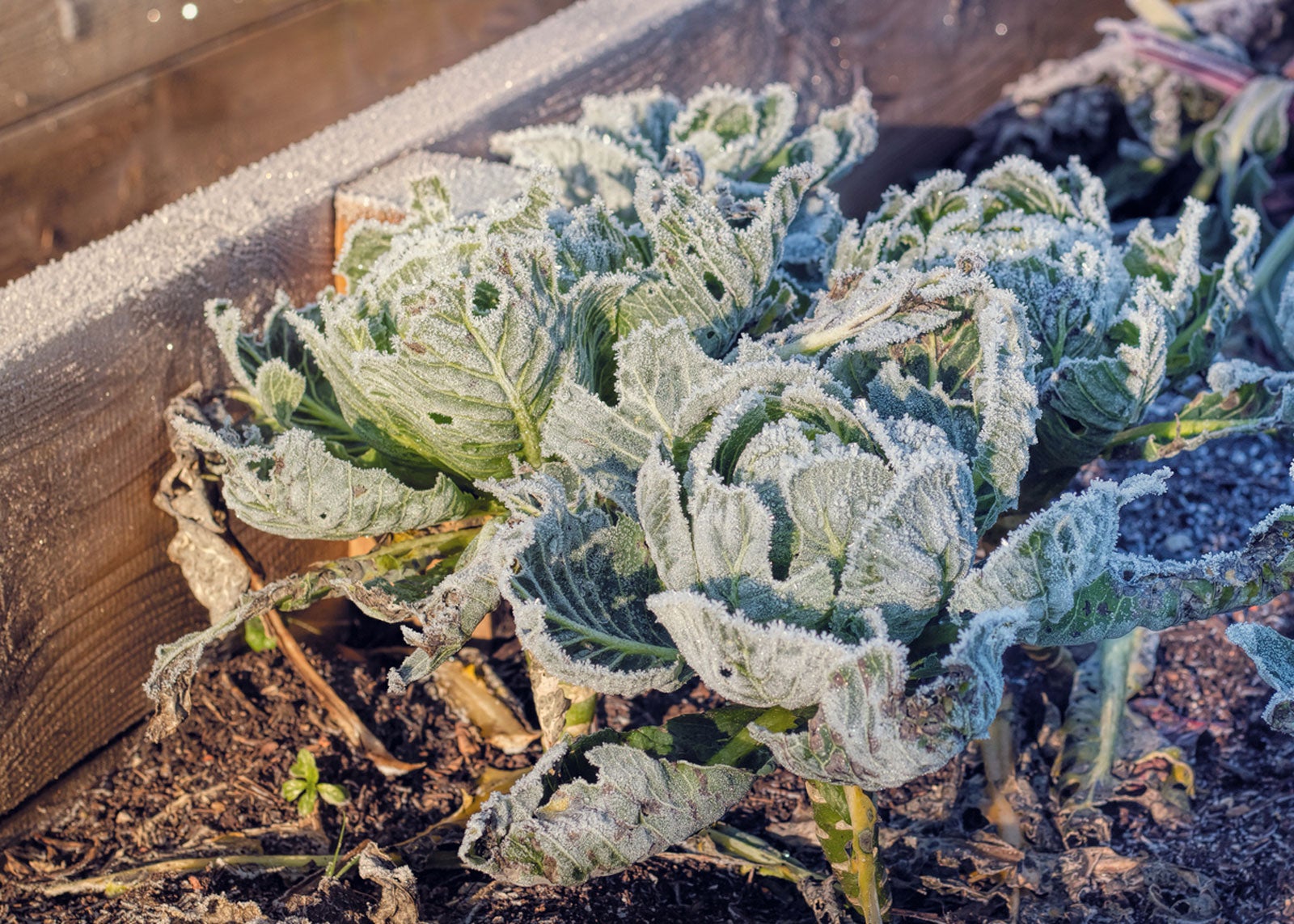What Is A Hard Frost: Information On Plants Affected By Hard Frost


Sometimes plant frost information and protection can be confusing to the average person. Weather forecasters may predict either a light frost or hard frost in the area. So, what is the difference and how are plants affected by hard frost versus light ones? Keep reading to find out more about the effects of hard frost, including information on hard frost protection.
What is a Hard Frost?
So, what is a hard frost anyway? A hard frost is a frost where both the air and the ground freeze. Many plants can withstand a light frost, where only the tips of the stems are affected, but most cannot withstand a hard frost. While the effects of hard frost can often be repaired by pruning, some tender plants may not recover.
Hard Frost Protection
You can give tender plants some hard frost protection by covering garden beds with sheets of plastic or tarps that trap the heat radiated by the earth. Fasten covers over the canopies of shrubs with clothespins or spring clips to add a measure of protection. Another alternative is to leave a sprinkler running so that it dribbles water onto your most valuable plants. The water droplets release heat as they cool to help prevent freezing. The best way to avoid damage is to wait until after the last expected frost before you plant. Frost information is available from a local nurseryman or your cooperative extension agent. The date of your last expected frost is derived from data collected by the U.S. Department of Agriculture over the past ten years. Knowing your safe planting date is a good guide when you are trying to avoid frost damage, but it is no guarantee.
Plants Affected by Hard Frost
The effects of hard frost that comes later than expected varies with the plant. Once shrubs and perennials break dormancy, they begin producing new growth and flower buds for the current season. Some plants can shrug off a frost with little noticeable damage, but in many cases the new foliage and buds will be seriously damaged or even killed. Plants affected by hard frost and cold damage may look tattered and have dead tips on the stems. You can improve the appearance of the shrubs and thwart opportunistic insects and diseases by cutting of the damaged tips a few inches (7.5 cm.) below the visible damage. You should also remove damaged flowers and buds along the stem. Plants that have already spent their resources on bud formation and growth will be set back by a hard frost. They may flower late, and in cases where bud formation began the previous year you may see no flowers at all. Tender vegetable crops and annuals may be damaged to the point where they will not recover and have to be replanted.
Gardening tips, videos, info and more delivered right to your inbox!
Sign up for the Gardening Know How newsletter today and receive a free copy of our e-book "How to Grow Delicious Tomatoes".

Jackie Carroll has written over 500 articles for Gardening Know How on a wide range of topics.
-
 Try The Trend – Turn Any Bed Into A Keyhole Garden With This Clever In-Ground Composter
Try The Trend – Turn Any Bed Into A Keyhole Garden With This Clever In-Ground ComposterKeyhole gardening is an efficient and sustainable practice that saves space. Get started on this DIY project quickly and easily with an in-ground composter.
By Bonnie L. Grant
-
 4 Superfast Composting Methods: Turn Waste Into Garden Gold In 30 Days Or Less
4 Superfast Composting Methods: Turn Waste Into Garden Gold In 30 Days Or LessTry the fastest composting methods to turbocharge your pile and transform kitchen scraps and garden waste into finished compost in just a few weeks.
By Mary Ellen Ellis